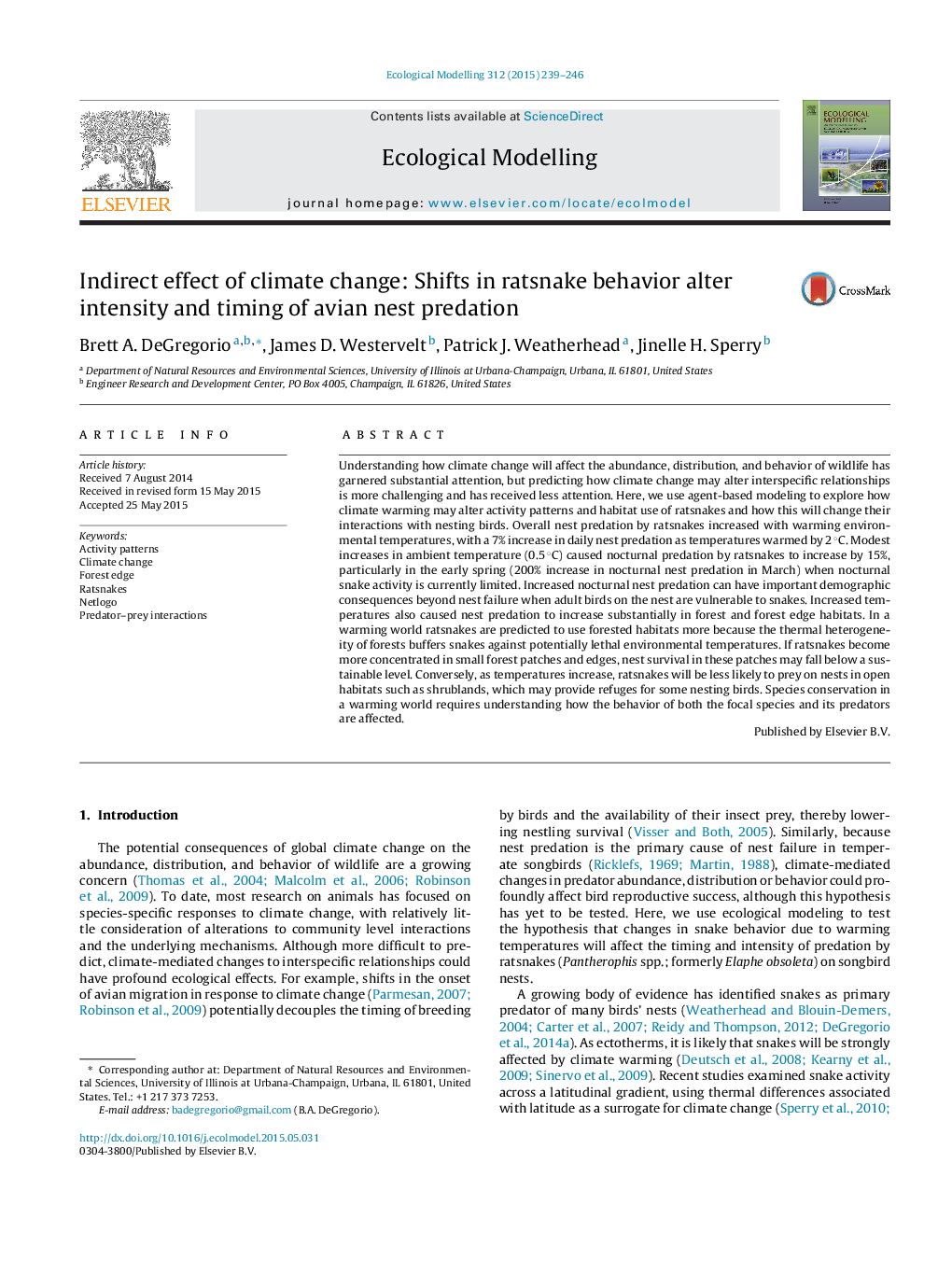| کد مقاله | کد نشریه | سال انتشار | مقاله انگلیسی | نسخه تمام متن |
|---|---|---|---|---|
| 6296548 | 1617435 | 2015 | 8 صفحه PDF | دانلود رایگان |
عنوان انگلیسی مقاله ISI
Indirect effect of climate change: Shifts in ratsnake behavior alter intensity and timing of avian nest predation
ترجمه فارسی عنوان
تاثیر غیر مستقیم تغییرات آب و هوایی: تغییرات در رفتار راتناک تغییر شدت و زمان بندی شکار لانه نهنگ
دانلود مقاله + سفارش ترجمه
دانلود مقاله ISI انگلیسی
رایگان برای ایرانیان
کلمات کلیدی
موضوعات مرتبط
علوم زیستی و بیوفناوری
علوم کشاورزی و بیولوژیک
بوم شناسی، تکامل، رفتار و سامانه شناسی
چکیده انگلیسی
Understanding how climate change will affect the abundance, distribution, and behavior of wildlife has garnered substantial attention, but predicting how climate change may alter interspecific relationships is more challenging and has received less attention. Here, we use agent-based modeling to explore how climate warming may alter activity patterns and habitat use of ratsnakes and how this will change their interactions with nesting birds. Overall nest predation by ratsnakes increased with warming environmental temperatures, with a 7% increase in daily nest predation as temperatures warmed by 2 °C. Modest increases in ambient temperature (0.5 °C) caused nocturnal predation by ratsnakes to increase by 15%, particularly in the early spring (200% increase in nocturnal nest predation in March) when nocturnal snake activity is currently limited. Increased nocturnal nest predation can have important demographic consequences beyond nest failure when adult birds on the nest are vulnerable to snakes. Increased temperatures also caused nest predation to increase substantially in forest and forest edge habitats. In a warming world ratsnakes are predicted to use forested habitats more because the thermal heterogeneity of forests buffers snakes against potentially lethal environmental temperatures. If ratsnakes become more concentrated in small forest patches and edges, nest survival in these patches may fall below a sustainable level. Conversely, as temperatures increase, ratsnakes will be less likely to prey on nests in open habitats such as shrublands, which may provide refuges for some nesting birds. Species conservation in a warming world requires understanding how the behavior of both the focal species and its predators are affected.
ناشر
Database: Elsevier - ScienceDirect (ساینس دایرکت)
Journal: Ecological Modelling - Volume 312, 24 September 2015, Pages 239-246
Journal: Ecological Modelling - Volume 312, 24 September 2015, Pages 239-246
نویسندگان
Brett A. DeGregorio, James D. Westervelt, Patrick J. Weatherhead, Jinelle H. Sperry,
